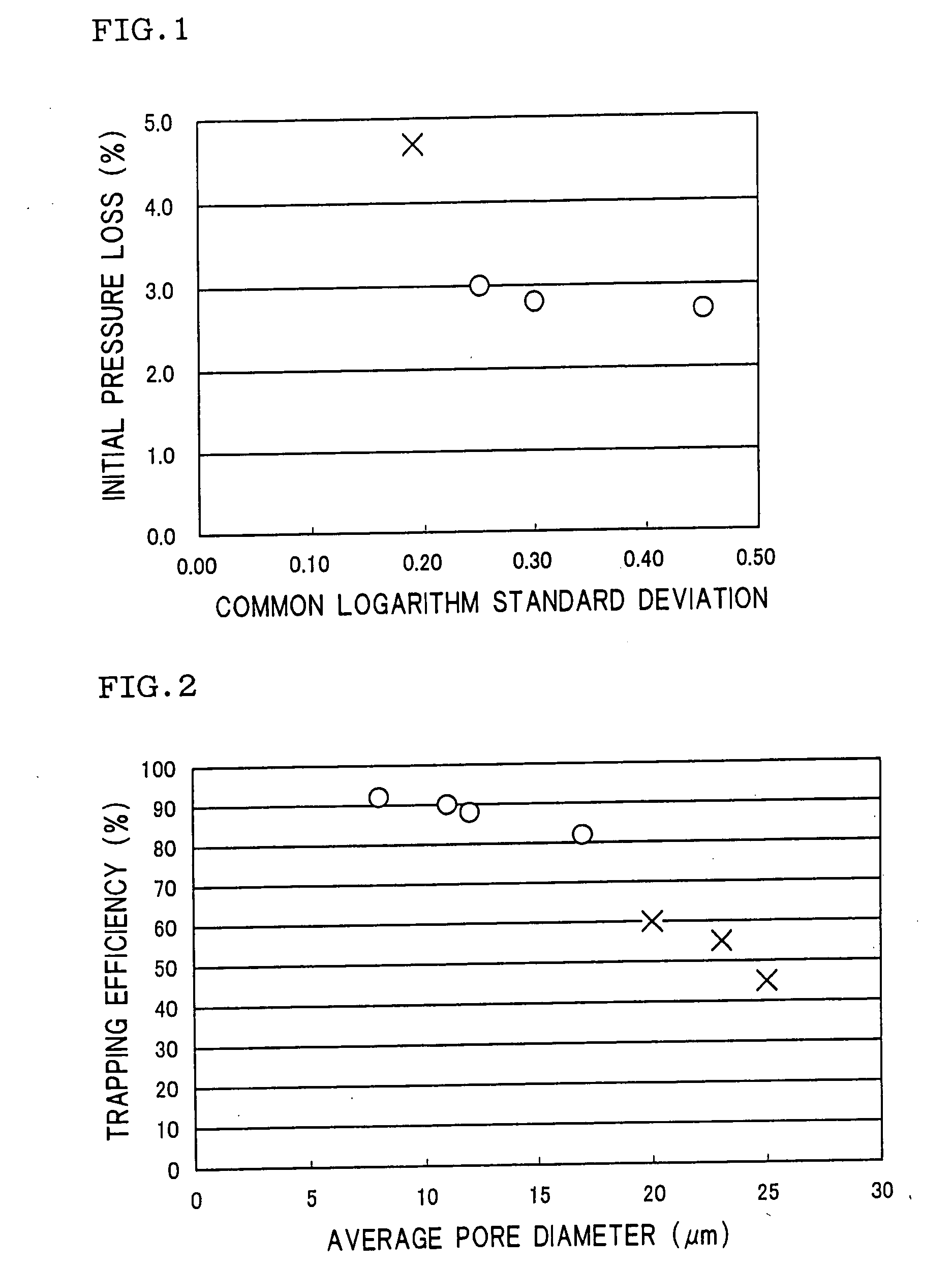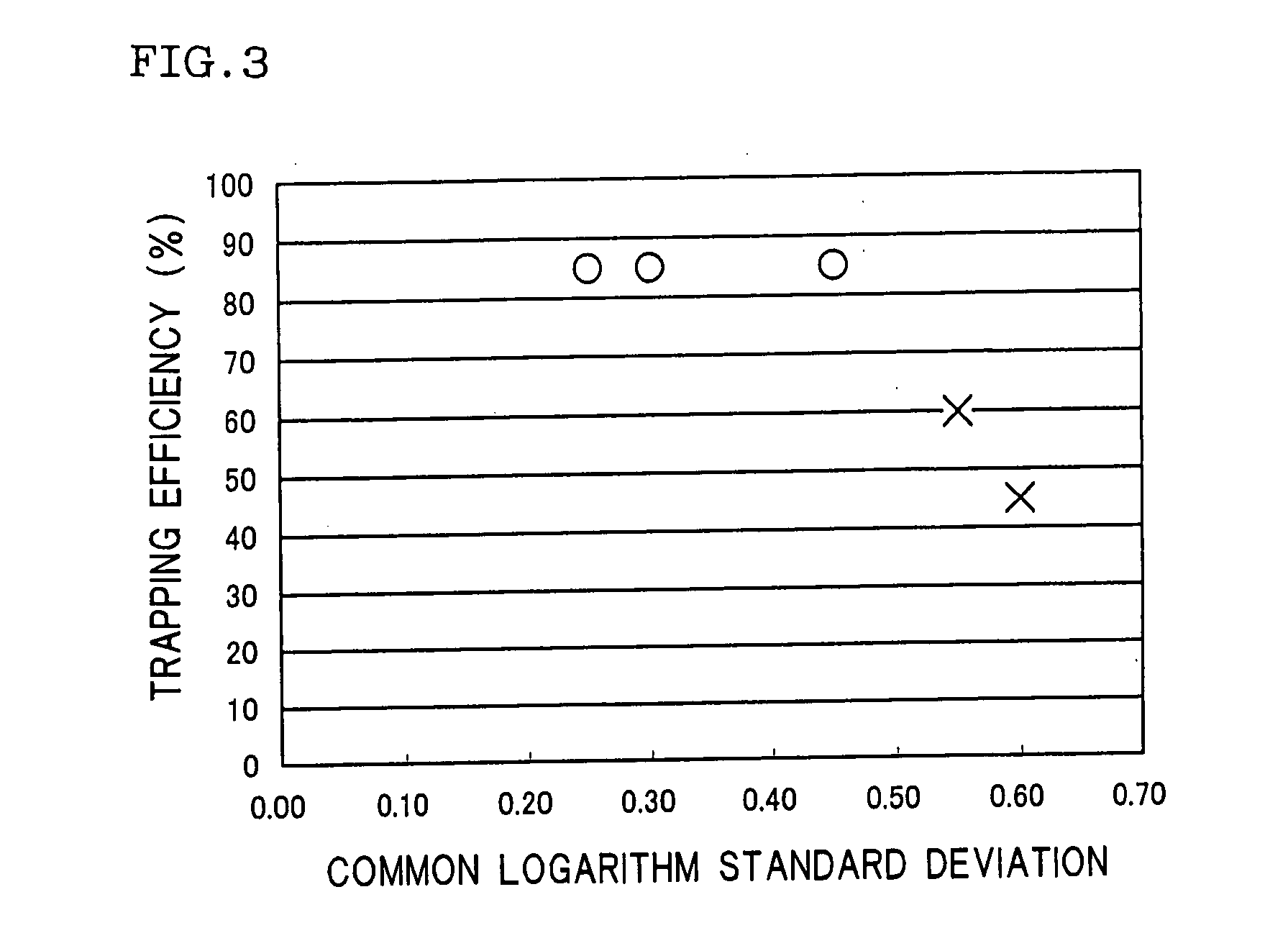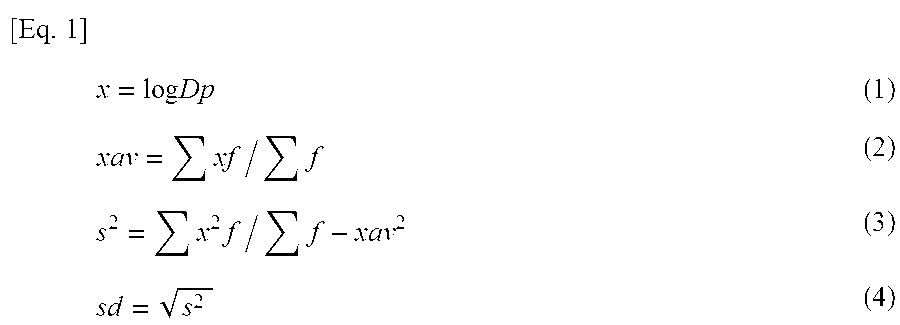Honeycomb filter
a filter and honeycomb technology, applied in the field of honeycomb filter, can solve the problems of large pressure loss and insufficiently minimize pressure loss, and achieve the effect of high efficiency and minimal initial pressure loss during exhaust gas treatmen
- Summary
- Abstract
- Description
- Claims
- Application Information
AI Technical Summary
Benefits of technology
Problems solved by technology
Method used
Image
Examples
example 1
[0054]As cordierite forming materials, alumina, alumina hydroxide, kaolin, talc and silica were used. Each of the materials in which a particle size (V50) (μm) at 50 vol % was 10 μm in each volume particle size distribution was used. As the whole cordierite forming materials, in the volume particle size distribution of the whole cordierite forming material, the particle size distributions of the materials were adjusted so that a value of a ratio (a volume particle size distribution ratio: [Vall90] / [Vall10]) of a particle size (Vall0) (μm) at 90 vol % to a particle size (Vall10) (μm) at 10 vol % was 7.
[0055]To 100 parts by mass of the cordierite forming material, 35 parts by mass of water as a dispersion medium, 6 parts by mass of organic binder and 0.5 part by mass of dispersant were added, mixed and kneaded to prepare a clay. A coke was used as a pore former, hydroxypropyl methyl cellulose was used as an organic binder and ethylene glycol was used as a dispersant. The pore former h...
example 2
[0071]A honeycomb filter (Example 2) was prepared in the same manner as in Example 1 except that a particle diameter distribution of a pore former, an amount of the pore former to be blended and a particle diameter distribution of a cordierite forming material were appropriately controlled to thereby set a standard deviation in terms of common logarithm to 0.3. An average pore diameter and a standard deviation in terms of common logarithm in pore diameter distribution were measured, and an initial trapping efficiency (the trapping efficiency) and an initial pressure loss during an exhaust gas treatment were measured in the same manner as in Example 1. Results are shown in Table 1.
example 3
[0072]A honeycomb filter (Example 3) was prepared in the same manner as in Example 1 except that a particle diameter distribution of a pore former, an amount of the pore former to be blended and a particle diameter distribution of a cordierite forming material were appropriately controlled to thereby set a standard deviation in terms of common logarithm to 0.45. An average pore diameter and a standard deviation in terms of common logarithm in pore diameter distribution were measured, and an initial trapping efficiency (the trapping efficiency) and an initial pressure loss during an exhaust gas treatment were measured in the same manner as in Example 1. Results are shown in Table 1.
PUM
| Property | Measurement | Unit |
|---|---|---|
| pore diameter distribution | aaaaa | aaaaa |
| pore diameter | aaaaa | aaaaa |
| thickness | aaaaa | aaaaa |
Abstract
Description
Claims
Application Information
 Login to View More
Login to View More - R&D
- Intellectual Property
- Life Sciences
- Materials
- Tech Scout
- Unparalleled Data Quality
- Higher Quality Content
- 60% Fewer Hallucinations
Browse by: Latest US Patents, China's latest patents, Technical Efficacy Thesaurus, Application Domain, Technology Topic, Popular Technical Reports.
© 2025 PatSnap. All rights reserved.Legal|Privacy policy|Modern Slavery Act Transparency Statement|Sitemap|About US| Contact US: help@patsnap.com



